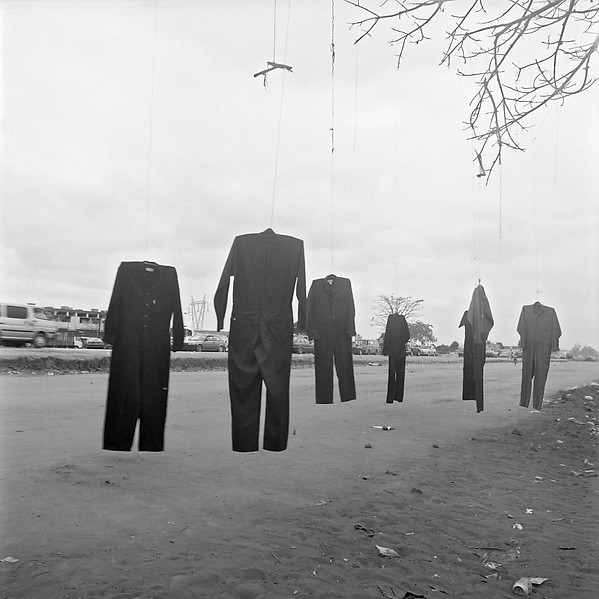
The Aftermath of Conflict
Jo Ractliffe’s Photographs of Angola and South Africa
Until March 6, 2016
Metropolitan Museum of Art, New York
Woman and her baby, Roque Santeiro market, 2007.
About:
Throughout her career, South African photographer Jo Ractliffe (born 1961) has directed her camera toward landscapes to address themes of displacement, conflict, history, memory, and erasure. This exhibition brings together selected works from three of her recent photographic series that focus on the aftermath of the Angolan Civil War (1975–2002) and its relationship with the Border War (1966–89) fought by South Africans in Angola and present-day Namibia. For Ractliffe and many other South African civilians, Angola during these wars was an abstract place, a “secret, unspoken location where brothers and boyfriends were sent as part of their military service.” When seen consecutively, these three series reveal Ractliffe’s deepening engagement with the region’s complex histories as an attempt to “retrieve a place for memory.”
Dryingfish on the beach at IIha, 2007.
The earliest series, Terreno Ocupado (2007–8), was produced during Ractliffe’s first visit to Angola’s capital, Luanda, five years after the end of the Civil War. These images highlight the structural instability of the capital’s shantytowns and question what it means for land to be occupied, abandoned, and struggled over. While working on As Terras do Fim do Mundo (2009–10), Ractliffe traveled alongside ex-soldiers returning to the desolate places in the Angolan countryside where they had fought. The Borderlands (2011–13) examines the impact of the wars in Angola within South Africa’s borders. For this most recent project, she photographed militarized landscapes that had been occupied by the South African army, tracing histories of displacement that began during the colonial and apartheid periods and continue to unfold today.
Roadside stall on the way to Viana, 2007.
The photographs in all three series were originally produced as either gelatin silver prints or archival pigment prints on cotton paper; the inkjet prints on display here were made by the artist specially for this exhibition.
Wreck of a Chinese Ship at IIha, 2007.
This exhibition has been organized to coincide with Kongo: Power and Majesty, which focuses on works created by artists in present-day Angola between the sixteenth and nineteenth centuries.
(text press release MET)



